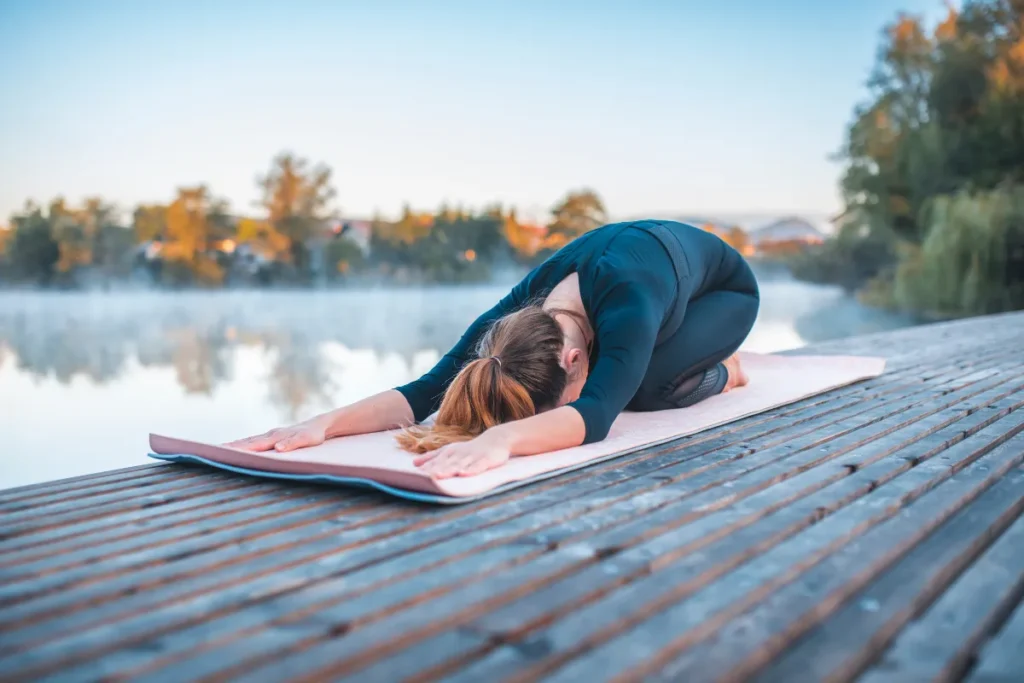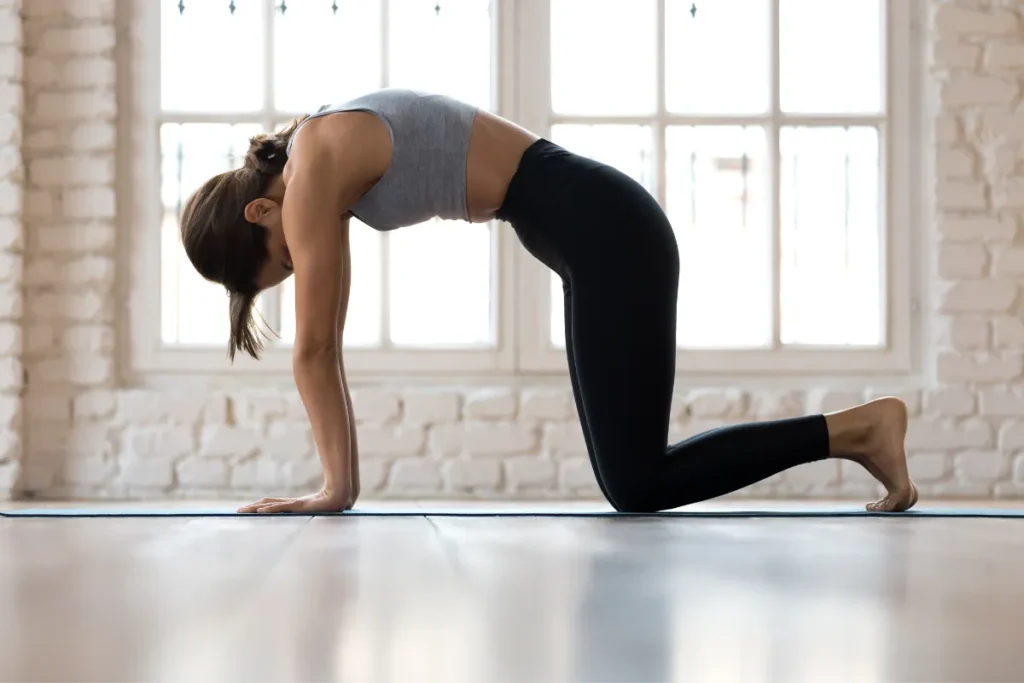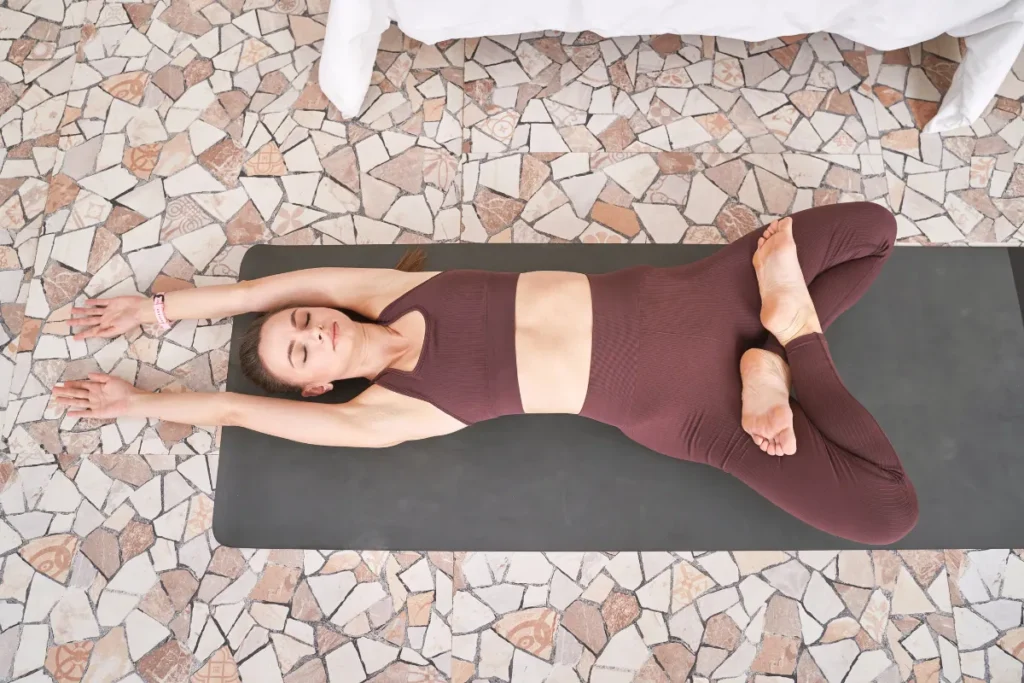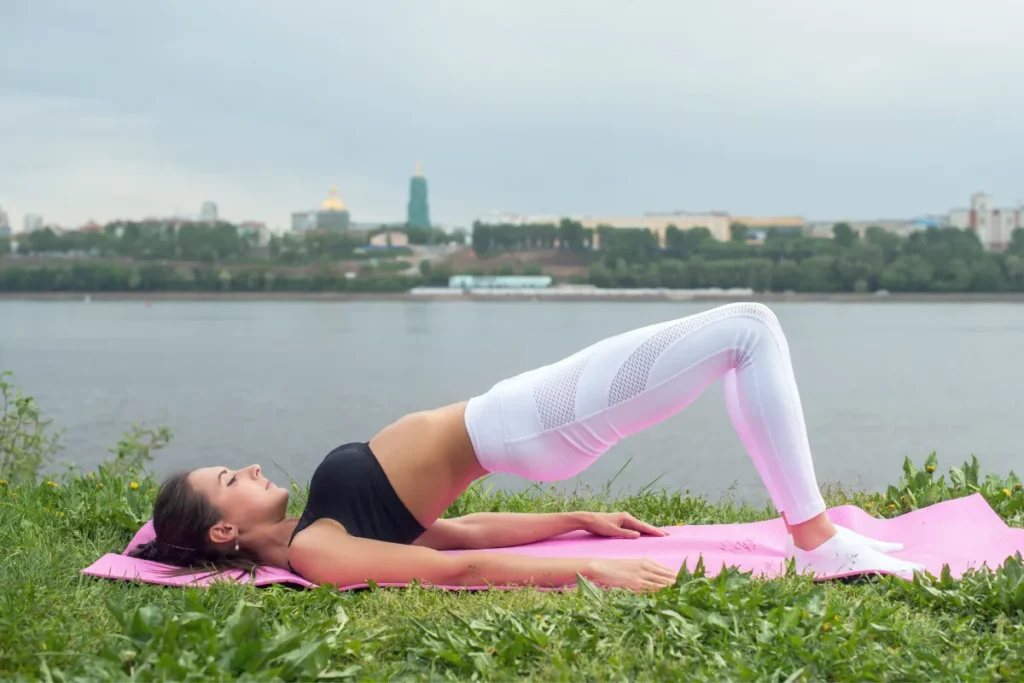Endometriosis is a painful condition that affects millions of women worldwide.
It occurs when tissue similar to the lining of the uterus grows outside of the uterus, leading to inflammation, scarring, and severe pain, especially during menstruation.
While there is no cure for endometriosis, various treatment options, including medication, surgery, and lifestyle changes, can help manage symptoms and improve quality of life.
Among these lifestyle changes, yoga has gained recognition as a beneficial practice for women with endometriosis.
In this article, we’ll explore how yoga can help alleviate symptoms of endometriosis and introduce some specific stretches that may provide relief.
Understanding Endometriosis
Before delving into yoga as a therapeutic approach for endometriosis, it’s essential to understand the condition itself.
Endometriosis occurs when the tissue that normally lines the inside of the uterus (the endometrium) grows outside of it.
This tissue can spread to other pelvic organs such as the ovaries, fallopian tubes, and the outer surface of the uterus.
During menstruation, these abnormal tissue growths bleed, just like the lining of the uterus, but because they have no way to exit the body, they cause inflammation, pain, and the formation of scar tissue.
Common symptoms of endometriosis include:
Pelvic pain that worsens during menstruation
Chronic lower back and abdominal pain
Pain during intercourse
Heavy menstrual bleeding
Difficulty conceiving
Digestive issues such as diarrhea, constipation, and bloating
The severity of symptoms can vary greatly among individuals, with some experiencing mild discomfort and others facing debilitating pain that significantly impacts their daily lives.
Yoga as a Therapeutic Approach for Endometriosis
Yoga, an ancient practice originating from India, combines physical postures, breathing exercises, and meditation to promote overall well-being.
While it’s not a cure for endometriosis, yoga offers numerous benefits that can help manage symptoms and improve quality of life for those living with the condition.
Here’s how yoga can be beneficial for women with endometriosis:
Pain Management:
Yoga can help reduce pain by releasing tension in the muscles, improving blood circulation, and promoting relaxation.
Certain yoga poses target the pelvic area and lower back, where endometriosis-related pain is commonly felt.
Stress Reduction:
Chronic pain and the challenges of living with endometriosis can lead to heightened stress levels.
Yoga incorporates mindfulness and breathing techniques that can help reduce stress and promote a sense of calm and relaxation.
Improved Flexibility and Mobility:
Endometriosis pain can cause stiffness and reduced mobility in the pelvic region and lower back.
Regular yoga practice can improve flexibility and range of motion, making it easier to cope with pain and discomfort.
Hormonal Balance:
Some yoga poses stimulate the endocrine system, which regulates hormone production in the body.
Balancing hormones can help alleviate symptoms associated with hormonal fluctuations, such as mood swings and menstrual irregularities.
Enhanced Mind-Body Connection:
Yoga encourages practitioners to listen to their bodies and cultivate awareness of physical sensations. This heightened mind-body connection can help women with endometriosis better understand their pain triggers and develop coping strategies.
Best Yoga Poses for Endometriosis Relief
While yoga offers a wide range of benefits for managing endometriosis symptoms, not all poses may be suitable for everyone.
It’s essential to listen to your body and practice yoga mindfully, avoiding poses that exacerbate pain or discomfort.
Here are some yoga poses that may provide relief for individuals with endometriosis:
Child’s Pose (Balasana):

This gentle resting pose stretches the lower back, hips, and thighs, relieving tension and promoting relaxation.
To perform Child’s Pose, kneel on the floor with your big toes touching and knees spread apart.
Sit back on your heels and extend your arms forward, lowering your forehead to the mat.
Cat-Cow Stretch (Marjaryasana-Bitilasana):

This dynamic pose helps improve spinal flexibility and relieves tension in the back and abdomen.
Begin on your hands and knees with your wrists aligned under your shoulders and knees under your hips.
Inhale as you arch your back and lift your tailbone and chest toward the ceiling (Cow Pose), then exhale as you round your spine and tuck your chin to your chest (Cat Pose).
Repeat this movement for several breaths.
Reclining Bound Angle Pose (Supta Baddha Konasana):

This restorative pose opens the hips and groin, relieving tension and promoting relaxation.
Lie on your back with your knees bent and feet flat on the floor.
Allow your knees to fall out to the sides, bringing the soles of your feet together.
You can place pillows or blankets under your knees for support.
Supported Bridge Pose (Setu Bandhasana):

Bridge Pose stretches the chest, neck, and spine while also stimulating the abdominal organs.
To perform Supported Bridge Pose, lie on your back with your knees bent and feet hip-width apart.
Place a yoga block or bolster under your sacrum (the bony part of your lower back) and relax into the support.
Legs-Up-the-Wall Pose (Viparita Karani):

This gentle inversion improves circulation, relieves tension in the legs and lower back, and promotes relaxation.
Sit sideways against a wall with your legs extended along the wall.
Lie back and swing your legs up the wall, keeping your hips close to the wall.
You can place a folded blanket or bolster under your hips for support.
Supine Spinal Twist (Supta Matsyendrasana):

This twisting pose stretches the spine, shoulders, and hips while also massaging the abdominal organs.
Lie on your back with your arms extended to the sides in a T shape.
Bend your knees and shift your hips to the right, then drop your knees to the left, twisting your spine.
Repeat on the other side.
Conclusion
Yoga offers a holistic approach to managing the symptoms of endometriosis, providing physical, mental, and emotional benefits.
By incorporating gentle stretching, breathing exercises, and mindfulness techniques into your daily routine, you can reduce pain, improve flexibility, and enhance overall well-being.
However, it’s essential to consult with your healthcare provider before starting any new exercise regimen, especially if you have underlying health conditions or concerns.
With consistent practice and a mindful approach, yoga can be a valuable tool in your journey toward managing endometriosis and reclaiming your health and vitality.

